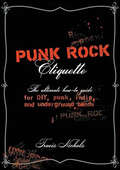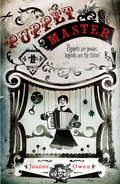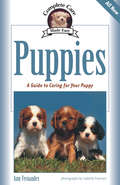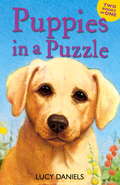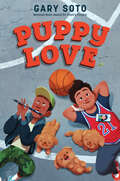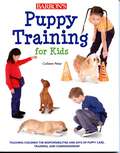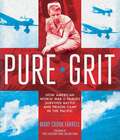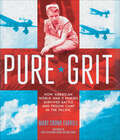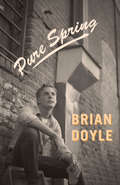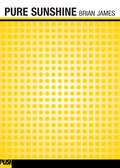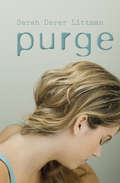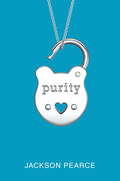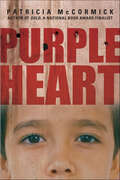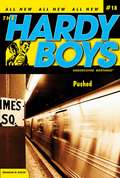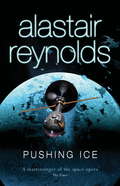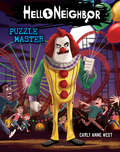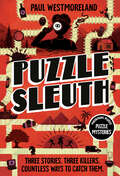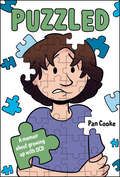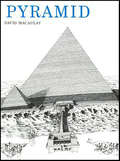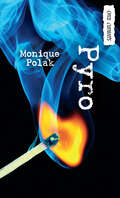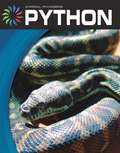- Table View
- List View
Punk Rock Etiquette: The Ultimate How-to Guide for DIY, Punk, Indie, and Underground Bands
by Travis NicholsLooking to start an underground band? Don't make a move until you've read this book! So you KNOW you are destined to rock... well you're in luck -- all you need is this book! (Please note musical talent, bandmates, a car for touring, and an uncle who owns a record label might also help.) An original blend of nonfiction how-to's about all things DIY rock created by an indie-circuit veteran with a knack for hysterical snark, PUNK ROCK ETIQUETTE teaches you everything from how to pick your bandmates and choose a name (Never deliberately misspell your band's name. C how lame it lookz?), to detailed guides on screenprinting your own merch, and interviews and advice from studio owners about the do's and don'ts of recording. PUNK ROCK ETIQUETTE is an unfiltered peek backstage that will appeal to aspiring musicians and anyone who's curious about what goes on in the hours between the last chord and the next big show.
Puppet Master
by Joanne OwenFrom riches to rags, Milena is growing up in the city of Prague at the turn of the twentieth century. Her parents' once prosperous theatre lies in disrepair and her life seems to be in ruins, and has been since that fateful night her father died in a tragic accident and Milena's beautiful, talented Mother went missing. No trace of her has been found. But Milena has never lost hope that she will come back.The day she meets the flamboyant Puppet Master and his menacing protégés, the twins Zdenko and Zdenka, under the shadow of Prague's famous Astronomical Clock in the Old Town square is, coincidentally, the date of her mother's birthday. And it's the day Milena's grandmother chooses to reveal to her the story of her ancestors... and of her legacy. Or perhaps it's not such a coincidence.Joanne Owen's debut novel skilfully mingles the legends of Bohemia in a story rich in the traditions of circus, theatre and magic, all set in a city waiting to lay bare a myriad of secrets.Longlisted for the Branford Boase Award 2009 and the Carnegie Medal.
Puppies
by Isabelle Francais Amy FernandezComplete Care Made Easy books address all the major concerns about owning and training a small pet. Each care book offers practical advice, emergency first aid tips, fun activities, and more! Look to the training titles for in-depth training techniques and helpful tips.
Puppies in a Puzzle: Dalmatian in the Dales & Labrador on the Lawn
by Lucy DanielsLABRADOR ON THE LAWN: Mandy and James are staying with her parents at a holiday cottage in the Lake District when they spot a mischievous Labrador on their lawn. James's dog Blackie is delighted to have found a friend, but with no identification or collar, how will the Hopes find her owner? And why does she seem so at home in the cottage?DALMATIAN IN THE DALES: On their way to investigate deer poachers operating nearby, Mandy and James discover a confused and footsore Dalmatian named Echo. Now it isn't just the deer that are in trouble. Can Mandy help Echo's owners to work out why their dog has suddenly started running away?
Puppy Love
by Gary SotoA sweetly humorous middle grade novel packed with action, basketball, and a dash of magical realism about friendship and family, first crushes, and belonging, from acclaimed author Gary Soto.Thirteen-year-old Jordan Mendoza has a huge crush on his classmate, Sierra, but he’s never going to win her affections if he stays a C student and keeps embarrassing himself on the basketball court. And it doesn’t help that his best friend, Antonio, likes to tease him about it all a little too much.But when Jordan dives into the waters of a dangerous irrigation canal to save a drowning puppy, he’s suddenly got even more on his mind than kissing Sierra and making the starting team. Can he nurse the abandoned puppy back to health (and will his parents let him keep her)? Who threw her into the canal—and is it possible that there are more puppies needing rescue? And why are the cops suddenly at Jordan’s door, looking for him? There’s something for every reader in this story’s mix of humor, sports, themes of thrilling independence, subtle strands of magical realism, and timely social commentary, all held together by a sweet and satisfying emotional core.
Puppy Love (Flirt)
by Catherine Hapka A. DestinyFirst crush, first love, first kiss--in this addition to the sweet and clean Flirt series, Lauren gets a lesson in love when she takes her new puppy to training classes.Fifteen-year-old Lauren has always loved dogs, but could never have one of her own until her highly allergic older sister went to college. Now she has her very own puppy, and she's head over heels...until the cute little monster starts chewing everything in sight and barking loud enough to drive the whole family crazy! So it's off to puppy kindergarten they go. There, Lauren quickly falls for the dog trainer, a seventeen-year-old dog whisperer with a hot accent. But is he really the one for her...or would she be better matched with Jamal, a fellow fumbling owner her own age with an unruly mutt? Will Lauren graduate from puppy kindergarten with a just a well-trained pup? Or will she have a new boyfriend by her side?
Puppy Training for Kids: Teaching Children the Responsibilities and Joys of Puppy Care, Training, and Companionship
by Colleen PelarA helpful puppy training book to introduce kids (and the whole family!) to the joys and responsibilities that come with bringing a new puppy home. All the essentials of dog training are here!Topics covered include:Purchasing puppy suppliesHouse training and socializing your puppyUnderstanding your puppy's behavior and body languageKeeping your puppy out of troubleThe basics of puppy trainingFun and games with puppiesYoung readers will find advice on exercise, selecting chew toys, clicker training, teaching the puppy to meet both human and animal friends, and much more. Sidebar features advise parents on guiding their children toward responsible dog ownership. The book is filled with engaging and instructive color photos.
Pure Grit: How American World War II Nurses Survived Battle and Prison Camp in the Pacific
by Mary Cronk FarrellIn the early 1940s, young women enlisted for peacetime duty as U.S. Army nurses. But when the Japanese attack on Pearl Harbor in 1941 blasted the United States into World War II, 101 American Army and Navy nurses serving in the Philippines were suddenly treating wounded and dying soldiers while bombs exploded all around them. The women served in jerry-rigged jungle hospitals on the Bataan Peninsula and in underground tunnels on Corregidor Island. <p><p> Later, when most of them were captured by the Japanese as prisoners of war, they suffered disease and near-starvation for three years. Pure Grit is a story of sisterhood and suffering, of tragedy and betrayal, of death and life. The women cared for one another, maintained discipline, and honored their vocation to nurse anyone in need―all 101 coming home alive.
Pure Grit: How American World War II Nurses Survived Battle and Prison Camp in the Pacific
by Mary Cronk Farrell&“Farrell chronicles the harrowing story of U.S. Army and Navy nurses based in the Philippines during WWII . . . a memorable portrayal.&” —Booklist (starred review) In the early 1940s, young women enlisted for peacetime duty as U.S. Army nurses. But when the Japanese attack on Pearl Harbor in 1941 blasted the United States into World War II, 101 American Army and Navy nurses serving in the Philippines were suddenly treating wounded and dying soldiers while bombs exploded all around them. The women served in jerry-rigged jungle hospitals on the Bataan Peninsula and in underground tunnels on Corregidor Island. Later, when most of them were captured by the Japanese as prisoners of war, they suffered disease and near-starvation for three years. Pure Grit is a story of sisterhood and suffering, of tragedy and betrayal, of death and life. The women cared for one another, maintained discipline, and honored their vocation to nurse anyone in need—all 101 coming home alive. The book is illustrated with archival photographs and includes an index, glossary, and timeline. &“Farrell doesn&’t spare her young readers any grim details . . . She includes the challenges these women faced and the joy they felt on returning home. As awful as history can be, now might be the right time to introduce the next generation to this important period.&” —The Washington Post &“Young readers who enjoyed Tanya Lee Stone&’s Almost Astronauts: 13 Women Who Dared to Dream will also appreciate this story of courageous women whose story was nearly forgotten.&” —School Library Journal
Pure Spring
by Brian DoyleIn the sequel to the award-winning Boy O'Boy, it's spring in post-World War II Ottawa and Martin O'Boy has finally found a true home with Grampa Rip. Martin's also found a job, working for the Pure Spring soft drink company. Best of all, he's in love with beautiful Gerty McDowell. But everything's not perfect. Martin lied to kindly Mr. Mirsky, Pure Spring's owner, to get the job. Grampa Rip's brain increasingly goes missing. There's that mysterious, yet oddly familiar, man in the park. There are also Martin's memories, the sudden appearance of famed Soviet defector Igor Gouzensko, and Martin's shady boss, Randy. And worst of all, Randy is robbing Gerty's grandfather, and he's forcing Martin to be his accomplice. Martin's happiness, sense of duty, and love for Gerty collide. Can he find his way through these dire developments? Brian Doyle's fast-paced plot and vivid characterizations, along with the lively colloquial dialogue and period detail, create a rich historical portrait that confirms the author's place as a master storyteller.
Pure Sunshine (Push Fiction)
by Brian JamesA spellbinding trip of a novel about three friend breaking apart in their quest to stave off boredom and sameness.It's not about the drugs. It's not about the girls or the fights or the fading streetlights. It's about two nights that weren't going to be different from the rest, but then took a turn. It's about trying to find out who you are and who your real friends are. It's about everything being the same, the same, the same. It's about nothing being the same again. It's about Brendon, WIll, and Kevin -- three friends on different paths -- and the weekend that put them to the test.
Purge
by Sarah Darer LittmanFrom acclaimed author Sarah Darer Littman, a striking story about a girl's recovery from bulimia in the tradition of CUT, PERFECT, and GIRL INTERRUPTED.Janie Ryman hates throwing up. So why does she binge eat and then stick her fingers down her throat several times a day? That's what the doctors and psychiatrists at Golden Slopes hope to help her discover. But first Janie must survive everyday conflicts between the Barfers and the Starvers, attempts by the head psychiatrist to fish painful memories out of her emotional waters, and shifting friendships and alliances among the kids in the ward.
Purity
by Jackson PearceBefore her mother died, Shelby promised three things: listen to her father, love as much as possible, and live without restraint. Those Promises become hard to keep when Shelby's dad joins the committee for the Princess Ball, where girls must take a vow of purity - no "bad behaviour", no breaking the rules, and definitely no sex.Torn between Promises, Shelby makes a decision - to exploit a loophole and lose her virginity before taking the vow. But somewhere between failed hookup attempts and helping her dad plan the ball, Shelby begins to understand what her mother really meant, what her father really needs, and who really has the right to her purity.
Purple Heart
by Patricia McCormickWhen Private Matt Duffy wakes up in an army hospital in Iraq, he's honored with a Purple Heart. But he doesn't feel like a hero.There's a memory that haunts him: an image of a young Iraqi boy as a bullet hits his chest. Matt can't shake the feeling that he was somehow involved in his death. But because of a head injury he sustained just moments after the boy was shot, Matt can't quite put all the pieces together. Eventually Matt is sent back into combat with his squad—Justin, Wolf, and Charlene—the soldiers who have become his family during his time in Iraq. He just wants to go back to being the soldier he once was. But he sees potential threats everywhere and lives in fear of not being able to pull the trigger when the time comes. In combat there is no black-and-white, and Matt soon discovers that the notion of who is guilty is very complicated indeed.National Book Award Finalist Patricia McCormick has written a visceral and compelling portrait of life in a war zone, where loyalty is valued above all, and death is terrifyingly commonplace.
Pushed
by Franklin W. DixonIt's a holiday investigation for Frank and Joe Hardy!Frank and Joe go undercover at a New York City home for teenage runnaways during the annual Thanksgiving meal, after one of the home's former residents is pushed off a subway platform.
Pushing Ice
by Alastair ReynoldsFirst contact with extraordinary aliens, glittering technologies that could destroy the universe in a nanosecond, huge sweeping space operas: Alastair Reynolds is back!Some centuries from now, the exploration and exploitation of the Solar System is in full swing. On the cold edge of the system, Bella Lind, captain of the huge commercial spacecraft Rockhopper IV, helps fuel this new gold rush by attaching mass-driver motors to organic-rich water-ice comets to move them back to the inner worlds. Her crew are tough, blue-collar miners, engineers and demolition experts.Around Saturn, something inexplicable happens: one of the moons leaves its orbit and accelerates out of the Solar System. The icy mantle peels away to reveal that it was never a moon in the first place, just a parked spacecraft, millions of years old, that has now decided to move on.Rockhopper IV, trapped in the pull, is hurled across time and space into the deep, distant future, arriving in a vast, alien-constructed chamber. And the crew are not alone, for each chamber contains an alien culture dragged into this cosmic menagerie at the end of time.The crew of the Rockhopper IV know a lot about blowing up comets, but not much about first contact with ultra-advanced aliens. They have two things to worry about: can they (and their new alien allies) negotiate their way through each harrying contact? And can they assimilate the avalanche of knowledge about their own future - including all the glittering, dangerous technologies that are now theirs for the taking - without destroying themselves in the process?
Pushing Pause
by Celeste O. NorfleetFifteen-year-old Kenisha Lewis has it all: good friends who also live to dance, a hot boyfriend headed for the NBA, loving parents and a bling-filled home in the burbs. But all that changes when her dad drops a bomb: he wants a divorce-and his pregnant girlfriend is moving in. Suddenly, Kenisha and her mom are squeezed into her grandmother's small house in the city, and Kenisha's sharing a bedroom with a cousin she barely knows. Could she hate her life any more? Yeah. Because her boyfriend dumps her, her friends are acting weird and her mother is getting more and more depressed. Time for Kenisha to push the pause button on her life and take a long, deep breath-.
Putting Balloons on a Wall Is Not a Book: Inspirational Advice (and Non-Advice) for Life from @blcksmth
by Michael James SchneiderFrom viral balloon-word artist and Instagram sensation Michael James Schneider (@blcksmth) comes a one-of-a-kind debut gift book with never-before-seen original artwork!Featuring many of @blcksmth&’s most iconic balloon, flower, and light installations—plus exclusive new content—this book has a little something for everyone. Filled with funny, inspiring, and heartwarming messages on topics like self-love, self-growth, self-doubt, and advice for your future self, this is the perfect gift for any occasion or reader.
Putting Makeup on the Fat Boy
by Bil WrightIn this spirited exploration of strength and personality, a fabulous NYC teen knows he’s destined for greatness—if only he can survive his first job.Carlos Duarte knows that he’s fabulous. He’s got a better sense of style than half the fashionistas in New York City, and he can definitely apply makeup like nobody’s business. He may only be in high school, but when he lands the job of his dreams—makeup artist at the FeatureFace counter in Macy’s—he's sure that he’s finally on his way to great things. But the makeup artist world is competitive and cutthroat, and for Carlos to reach his dreams, he'll have to believe in himself more than ever.
Puzzle Master (Hello Neighbor #6)
by Carly Anne WestAaron Peterson feels like he's trapped in a recurring nightmare. After moving halfway across the world to flee his father's latest theme park failure, yet another disaster has occurred: A roller coaster car jumps the tracks at the Golden Apple Amusement Park, resulting in the death of his friend, Lucy Yi.As the town of Raven Brooks turns against the Peterson family, drudging up his father's past failures and seeking legal action against his flawed designs, Aaron withdraws into his own investigation. Because now Aaron knows the town is hiding a dirty secret: a secret enmeshed in his grandparents' research, the deadly defects in his father's theme park rides, and a secret society that will stop at nothing to keep their existence hidden.Don't miss this newest installment in the Hello Neighbor series, which features blueprints and secret documents throughout, to help readers unwind the mysteries at the heart of the games.
Puzzle Sleuth: Mindbending Murder Puzzle Mysteries [An Interactive Book]
by Paul WestmorelandChoose your path, solve the puzzles, and catch the killer in this collection of three ingenious murder mysteries that challenge middle grade readers with logic problems, visual games, and a Choose Your Own Adventure hook.When Arlo Banks solves a difficult puzzle in The Times, devised by an elderly Oxford professor, he wins a vast fortune. There's just one catch: he has to travel the world and write to the professor about his adventures. But enemies and killers lurk at every turn. From the Orient Express to the Nile River to British spy headquarters, join Arlo as he fights to find answers—and fights for his life!As Arlo Banks, you choose what path to take and what puzzles to answer to solve each mystery. On the trail of a ruthless mafia godfather determined to evade capture...on a pleasure cruise where a passenger's death has a killing effect on the others on board...behind the scenes at British intelligence, where a dangerous traitor is stealing government secrets.From breaking codes to defusing bombs, navigating mazes to sifting through evidence, Puzzle Sleuth is an addictive brain-teasing mix of story, game, and adventure. Just remember to choose wisely. Your next move could catch the killer—or be your last!
Puzzled: A Memoir about Growing Up with OCD
by Pan CookeGrowing up with undiagnosed OCD sure isn&’t easy, and here Pan Cooke shares his own experiences with that condition in a graphic-novel memoir that is as funny as it is powerfully candid and openhearted.Pan Cooke is ten years old when anxious thoughts begin to take over his brain like pieces of an impossible puzzle. What if he blurts out a swear word while in church? What if he accidentally writes something mean in his classmate&’s get-well card? What if his friend&’s racy photo of a supermodel ends up in his own homework and is discovered by his teacher? More and more, he becomes hijacked by fears that can only be calmed through exhausting, time-consuming rituals.Pan has no way of knowing that this anxiety puzzle and the stressful attempts to solve it are evidence of a condition called Obsessive Compulsive Disorder. This is his story of living with and eventually learning about OCD. Told with endearing honesty and humor, Puzzled shows the reader the importance of empathy for oneself and those going through something they don&’t yet understand.
Pyramid
by David Macaulay&“The mystery of the pyramids is solved before our eyes&” in this illustrated YA guide to their construction by the Caldecott Medal-winning author (Kirkus). In Pyramid, acclaimed author and illustrator David Macaulay explores the construction of ancient Egyptian pyramids from the initial planning stages to the methods used to lift stones up to the structure&’s highest level. Through concise text and richly detailed black and white illustrations your readers are introduced not only to ancient Egyptian engineering, tools, and labor practices, but also the philosophy of life, death, and afterlife that made these awe-inspiring monuments necessary as a pharaoh&’s final resting place. "Macaulay's brilliant Pyramid shows, detail by detail, how the great pharaohs' burial places were conceived and constructed… His draftsmanship is unexcelled, and his book is pharaonic in opulence and design."—Time
Pyro (Orca Currents)
by Monique PolakEver since he was small, Franklin has been soothed by fire. Staring into the flames helps Franklin forget his problems. And right now, he's got a lot to forget. Franklin's mother has left the family home to be with her hairdresser boyfriend. Franklin's father, the mayor of Montreal West, is too busy worrying about his public image to do anything about the family. As a rash of local fires competes with upcoming elections for media attention, Franklin's father has to work hard to keep the public happy. And Franklin has to reconsider his romance with fire. This short novel is a high-interest, low-reading level book for middle-grade readers who are building reading skills, want a quick read or say they don’t like to read!
Python (Animal Invaders)
by Barbara A. SomervillReaders will be introduced to the concepts of invasive species and challenged to think critically about the cause, effect, and control of dangerous creatures.
